Rione Sanità
The happy story of a former ghetto: the urban and cultural regeneration of Rione Sanità
For centuries a city cemetery, then a ghetto, off limits. All the fault of a bridge, which divided instead of uniting. Early nineteenth century: Joseph Bonaparte and then Joachim Murat planned the Sanità bridge to facilitate access to the Royal Palace of Capodimonte, cutting the Sanità district off from the rest of Naples. A closed suburb from which it seemed impossible to rise, to emerge: either you emigrated or you were Totò, the Italian comic actor who was born and raised on these streets. But then, in 2004, Father Antonio Loffredo, parish priest of the Basilica of Santa Maria della Sanità, began to form a network among the neighbourhood's inhabitants, setting up cooperatives and associations, gradually transforming the area into a still-growing centre of cultural and social ferment.
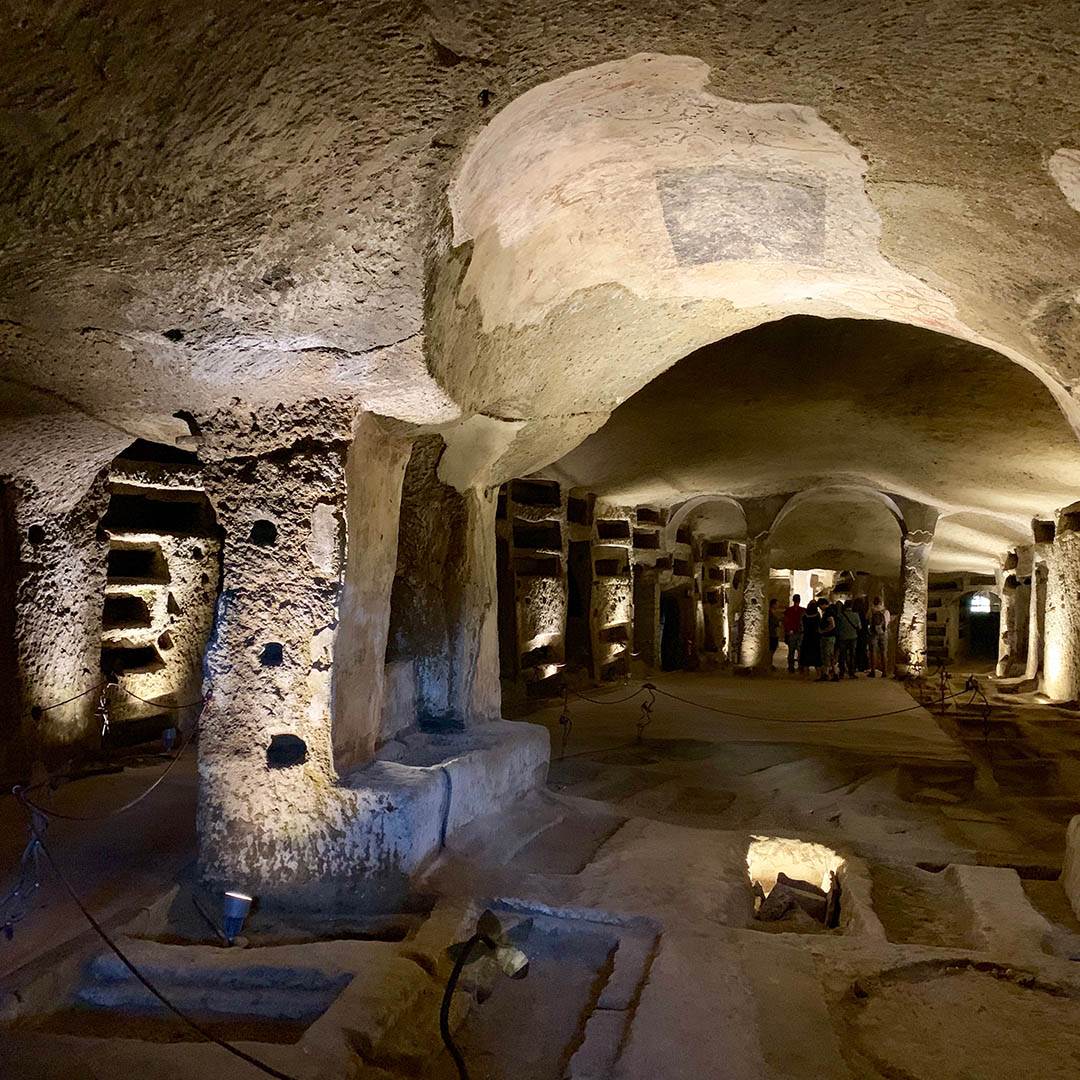
The Catacombs
A city beneath the city. The catacombs of San Gennaro and San Gaudioso find their way into the bowels of the city, recounting its most ancient history and the very close bond that Naples has with faith. They are underground cemeteries, but also places of prayer for the early Christians. A meeting point between West and East, but also an interweaving of the sacred and the profane. Multiform environments that tell stories of life and death, exploits and miracles, they contain the remains of Saint Agrippino and Saint Gaudioso (an African bishop), the tomb of Saint Gennaro, tunnels, stones, frescoes and mosaics and altars. They constitute monumental complexes of great archaeological, historical and religious value, yet they were abandoned and neglected for years. Until Father Loffredo, together with the Sanità youth united in a cooperative, la Paranza, and then in the Fondazione San Gennaro, took it over and radically regenerated it. Even the lighting system, capable of enhancing the chiaroscuro while preserving the site's pictorial heritage, was created by Officina dei Talenti, a cooperative formed by the neighbourhood's youth. And inclusive access was added thanks to paths for the visually impaired and blind and the absence of architectural barriers.
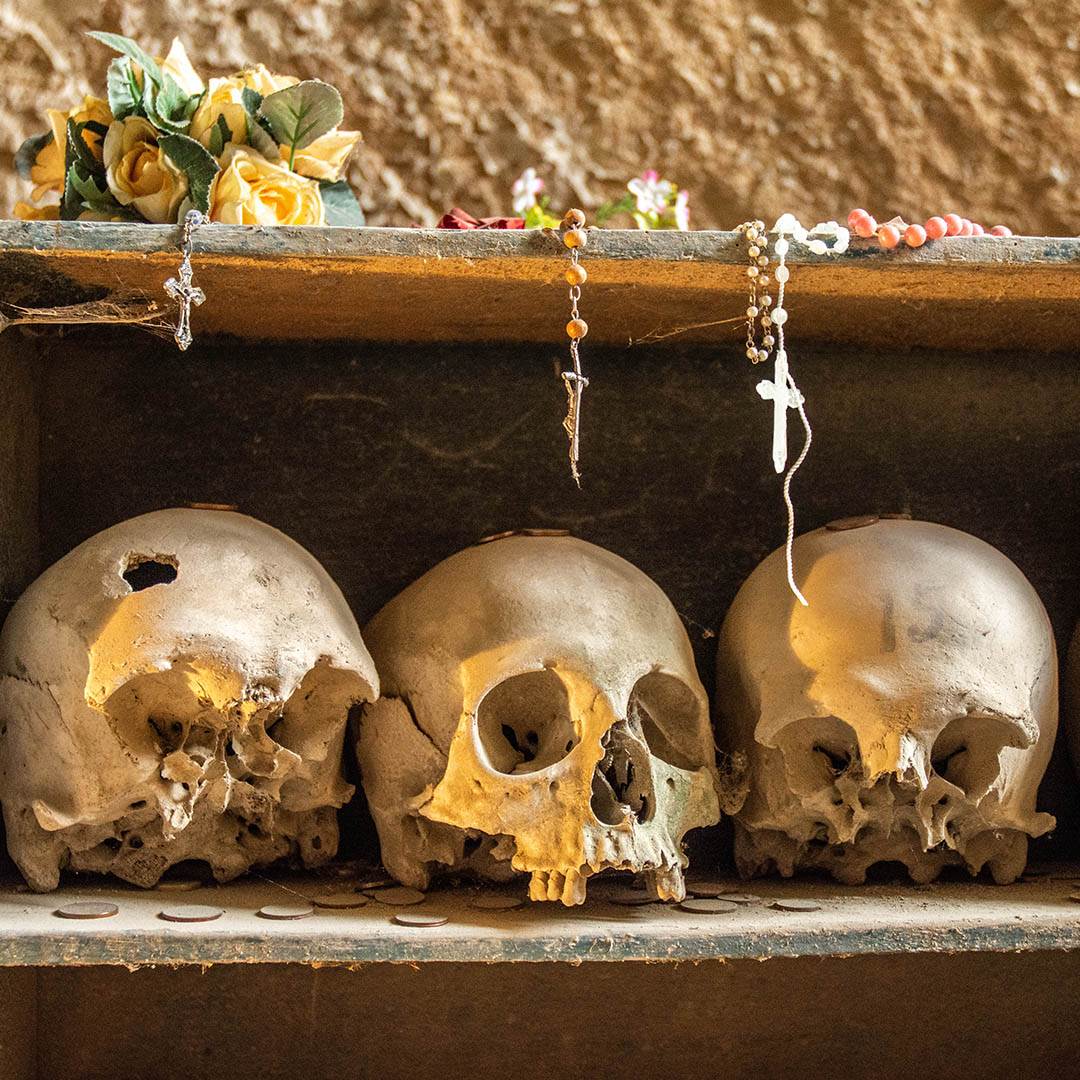
The Cemetery of the Fontanelle
The religious fervour in Naples is already tangible in the streets, revealed by idioms, requests for intercessions, holy images in pockets ready when needed, votive aedicules like small altars in the alleys. But a visit to the Fontanelle cemetery will provide overwhelming proof of this devotion. Set in a tufa quarry, it was the mass grave of the plague victims of 1656 and of those of the cholera epidemic of 1837. Don Gaetano Barbati placed the skulls and bones of the victims here, and for the people they became 'pezzentelle' souls, abandoned, left between earth and the afterlife. It is a place of great passion and devotion, where Neapolitans come to adopt a capuzzella (skull): they give it a name, light a lamp and venerate it in exchange for a favour or a lucky number to play in the lottery.
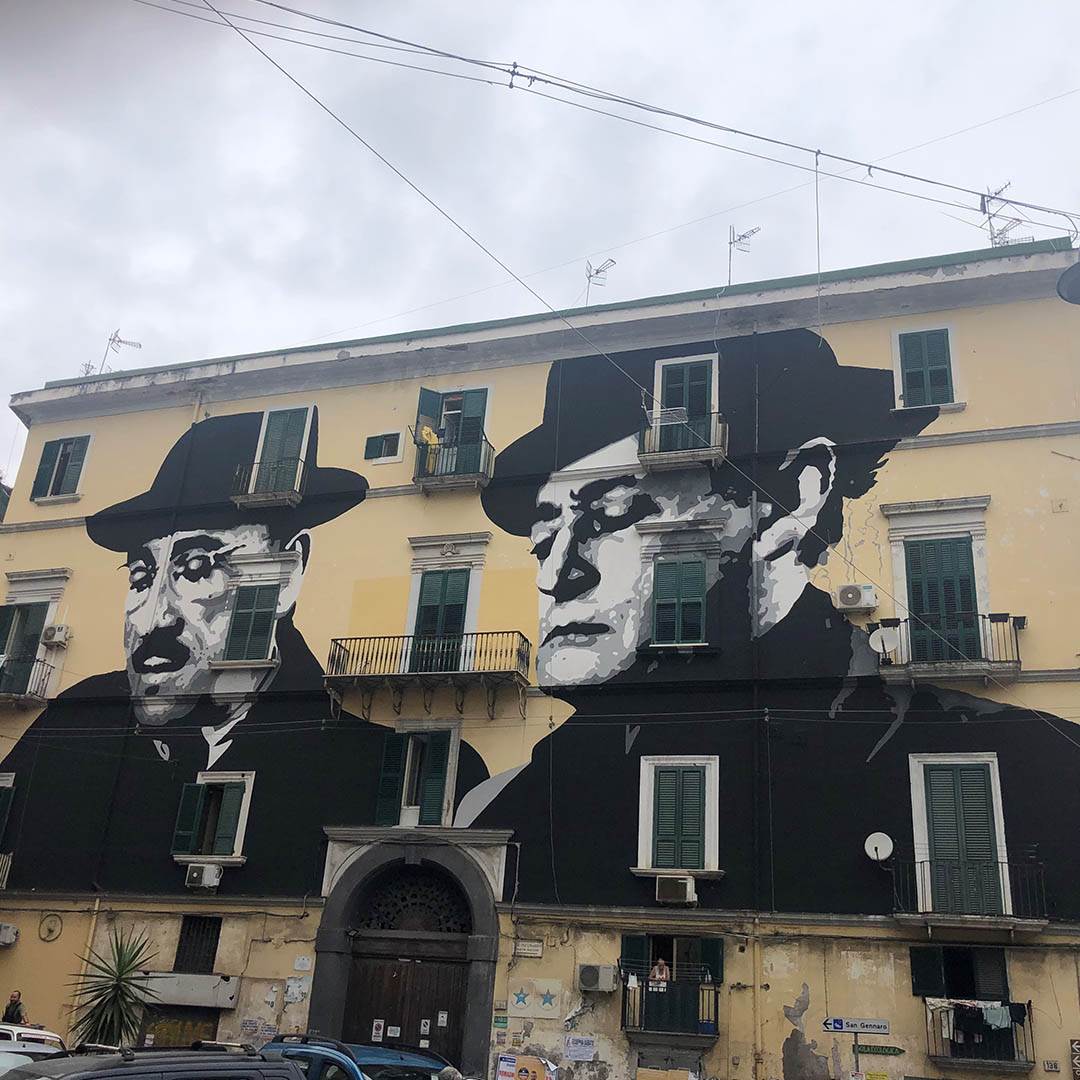
Cinema in the Sanità district
Since the 1950s, the neighbourhood has been an inspiration for art house cinema. There was the neo-realism of Vittorio de Sica, who filmed L'Oro di Napoli (‘The Gold of Naples’) in these streets in 1954, starring Totò and Sophia Loren, and Ieri, oggi e domani (‘Yesterday, Today and Tomorrow’), in 1963, with the same star (Totò and Sophia Loren) in the leading role. More recently, there was Mario Martone, first with Il Sindaco del Rione Sanità (‘The Mayor of Rione Sanità’), a film adaptation of the homonymous play by Eduardo De Filippo, which won the Leoncino d'Oro at the 76th Venice Film Festival, then with Nostalgia, a film based on the posthumous novel of the same name by Ermanno Rea, starring Pierfrancesco Favino, in competition at the Cannes Film Festival in 2022.
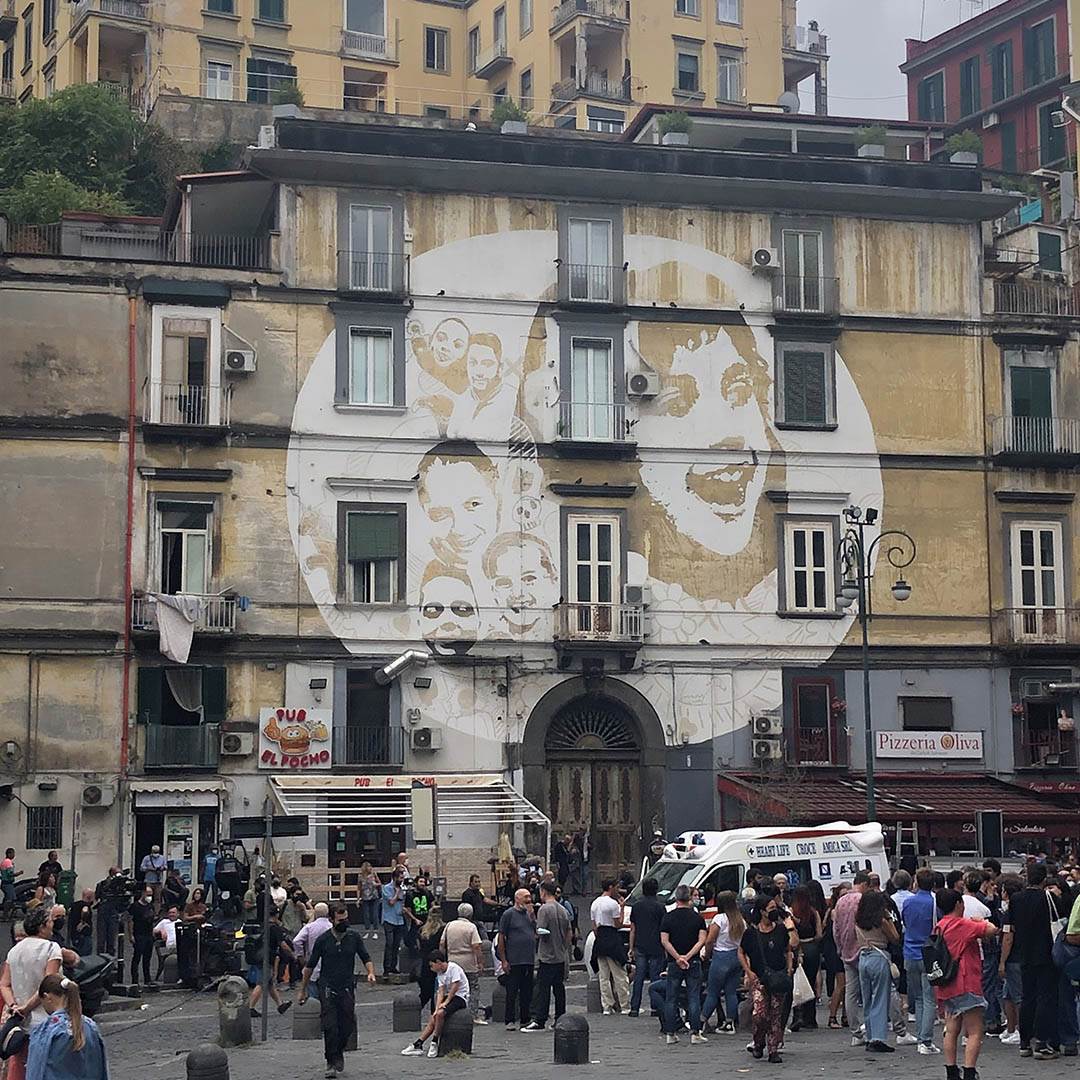
Street Art tour in the Sanità district
Urban art that colours, denounces, protests and offers hope. The Sanità district has changed its connotations thanks to masterful interventions by internationally renowned artists. Every corner and every alley reveal murals calling for reflection. In vico Buongiorno: Mowgli by the Argentine artist Irene Lasivita, women's faces and La benedizione di Dio (The Blessing of God) by the Mexican Addi Facte. In vico Misericordiella, a mural by the FX collective (Nu 'mmescà 'e fantasme cu ll'angiule - Don't mix up ghosts with angels), a Madonna and a baby Jesus with Afro characters (evidence of the neighbourhood's vocation for inclusion) removing a demon from a child's head. In via Mario Pagano, Antonio Cotecchia's choral work, a tribute to the Neapolitan spirit, portraying the faces of Eduardo De Filippo and Massimo Troisi safeguarding local tradition and culture, represented by many icons of the city. In via Montesilvano, the votive aedicules have been replaced by 'culture aedicules'. Shelves of books have been installed in place of saints and Madonnas. Images of Sophia Loren, Eduardo de Filippo by Mario Schiano and coloured leaves by Gianluca Raro stand out. In vico Lammatari the romanticism of Alex Senna's black and white characters. And we also see Maradona and Pino Daniele from Cotecchia's point of view.
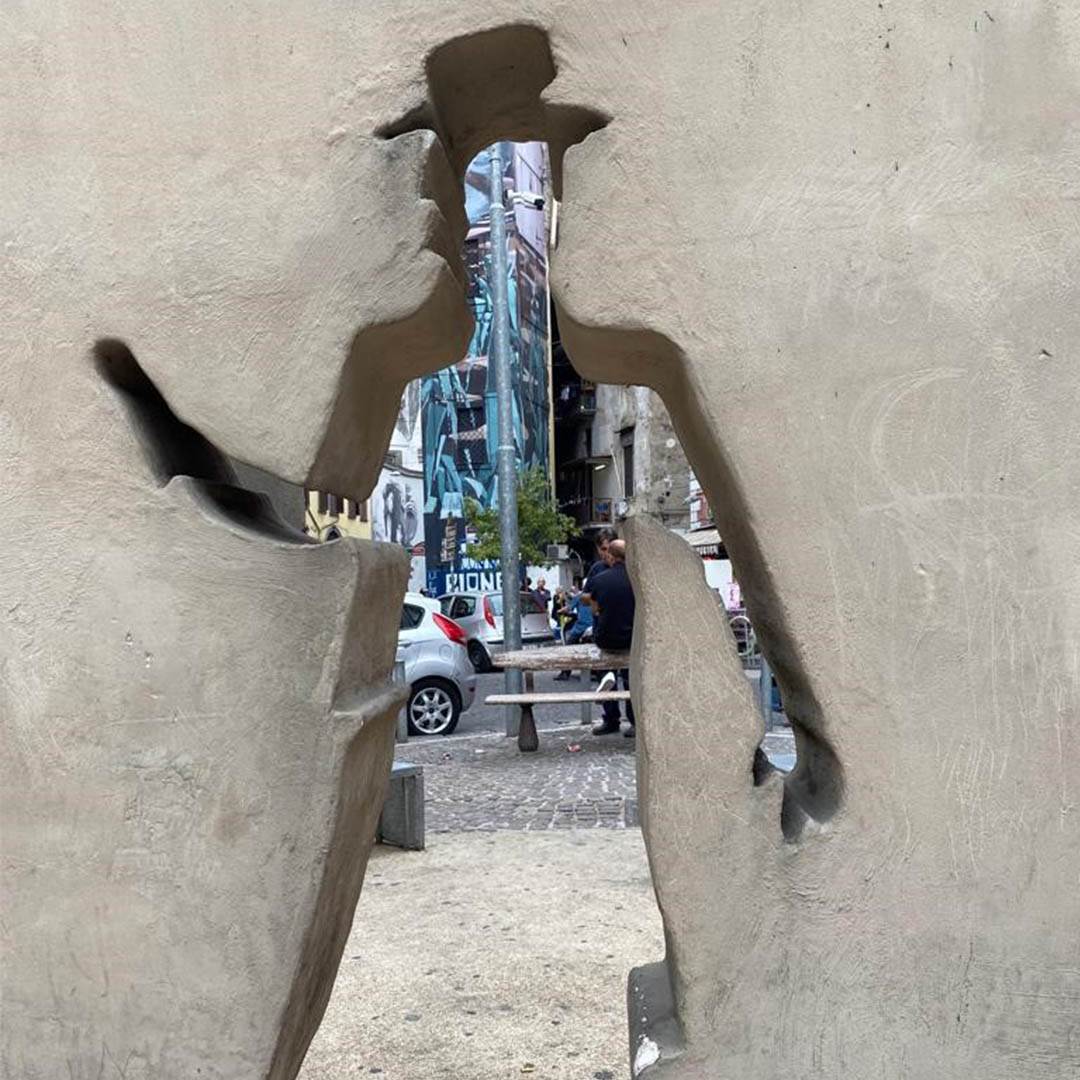
In vico Arena della Sanità, there is the portrayal of Totò and Peppino in La banda degli onesti (‘The Band of Honest Men’) by the Spaniard Tono Cruz, who also signed a mural called Luce (Light) in piazza Sanità: the faces of the district's children within a beam of light in the shape of an ox's eye, a beacon of hope and future change.
The Argentinian Francisco Bosoletti worked his magic on the wall of the basilica of Santa Maria della Sanità on which now stands out a work called ResisTiAmo (‘Resist/I love you’), a story of love and resilience of two young people from the neighbourhood.
While on the wall flanking the façade of the basilica of San Severo appears the colourful Totem della Perseveranza (Totem of Perseverance) by Matu, a paean to music (shapes and colours represent a symphonic composition) and to the perseverance of the young people of the neighbourhood. This is the home of the Sanitansamble youth orchestra, an educational and musical project that offers youngsters a future away from the streets. Lastly, Filipino artist Jerico Cabrera painted the Sanità bridge lift with the mural Tieneme ca’ te tengo (Hold on to me and I’ll hold you), which depicts two young people locked in an embrace.
USEFUL INFO
Distance from La Reggia Designer Outlet: about 27 km; travel time about 30 min
in partnership with![]()


